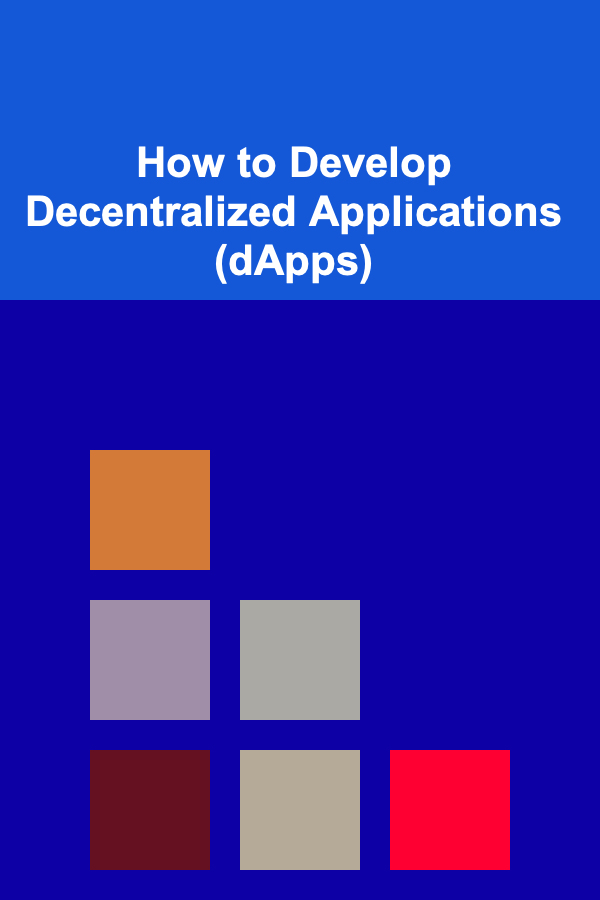
How to Secure Your Cloud Native Applications
ebook include PDF & Audio bundle (Micro Guide)
$12.99$11.99
Limited Time Offer! Order within the next:

The transition to cloud-native applications has been a game-changer in the modern software development landscape. Cloud-native apps, designed to leverage cloud environments fully, are more flexible, scalable, and efficient than traditional monolithic applications. However, with this shift comes an increased focus on security. The complexity and distributed nature of cloud-native applications introduce new security risks that must be addressed to ensure the safety of sensitive data and systems.
Securing cloud-native applications requires a multi-layered approach, incorporating security throughout the entire application lifecycle---from design and development to deployment and monitoring. In this article, we will explore various strategies, best practices, and tools to secure your cloud-native applications, with a focus on how to build and maintain a robust security posture.
Understanding Cloud-Native Security Challenges
Before diving into the specific security practices, it is essential to understand the unique challenges cloud-native applications present. Unlike traditional applications, cloud-native systems are built using microservices, containers, and orchestration platforms like Kubernetes. These technologies introduce complexity and new attack surfaces, which can make security harder to manage.
1.1. Dynamic and Distributed Nature of Cloud-Native Applications
Cloud-native applications are typically composed of multiple microservices, each running in its container or virtual machine. These microservices communicate with each other over various networks, often in dynamic and ephemeral environments. This decentralization and constant change make it difficult to apply traditional security models designed for static, monolithic applications.
1.2. Container and Orchestration Complexity
Containers provide a lightweight, portable way to run applications, but they also introduce security challenges. The container runtime, image vulnerabilities, network security, and container orchestration systems (such as Kubernetes) must be properly configured and secured to prevent unauthorized access and mitigate risks. Kubernetes, while providing an excellent orchestration platform, also brings with it complex security considerations around access control, pod security, and service meshes.
1.3. Continuous Delivery and DevOps Pipelines
Cloud-native applications often follow a Continuous Integration (CI) / Continuous Delivery (CD) pipeline, allowing for rapid development and deployment. While this speeds up time-to-market, it also increases the frequency and complexity of changes to the application. Each new deployment introduces new potential vulnerabilities, making it imperative to secure every phase of the pipeline---from code commit to deployment.
1.4. Securing Data in Transit and at Rest
Cloud-native applications often operate in multi-cloud or hybrid environments, which can introduce risks related to data confidentiality and integrity. Securing data in transit (via encryption and secure protocols) and ensuring proper encryption for data at rest is essential to prevent unauthorized access and data breaches.
Best Practices for Securing Cloud-Native Applications
The security of cloud-native applications should be integrated into every step of their lifecycle. Below, we explore some of the most critical practices for securing cloud-native applications, ensuring that they remain safe in a dynamic cloud environment.
2.1. Adopt a Zero Trust Architecture
One of the most effective ways to secure cloud-native applications is by adopting a Zero Trust architecture. Zero Trust assumes that both external and internal networks are inherently untrusted, meaning that no entity should be automatically trusted, whether inside or outside the organization. It enforces strict identity verification and access control policies.
- Authentication and Authorization: Implement strong multi-factor authentication (MFA) for all users and services interacting with the cloud-native environment.
- Least Privilege: Apply the principle of least privilege (PoLP) by ensuring that users and services only have access to the resources they need to perform their tasks.
Zero Trust enhances security by making it difficult for unauthorized users or services to access sensitive parts of your application, even if they compromise one part of the system.
2.2. Secure Containers and Microservices
Containers are at the core of cloud-native applications, but they also introduce unique security concerns, such as vulnerabilities in the container image, insecure configurations, and inadequate runtime security. To mitigate these risks:
- Use Trusted Base Images: Always pull container images from trusted sources and ensure they are regularly updated to address vulnerabilities.
- Scan Container Images for Vulnerabilities: Use container scanning tools like Trivy or Clair to detect known vulnerabilities in container images before deployment.
- Secure the Container Runtime: Ensure that the container runtime (e.g., Docker) is secured with proper configuration settings, such as restricting privileged access and using non-root users for containers.
- Use Network Policies: Leverage Kubernetes network policies or other container orchestration tools to control the communication between containers. This helps mitigate the risk of lateral movement in case one container is compromised.
By securing containers and microservices, you reduce the surface area for potential attacks and ensure that each service is isolated, limiting the potential damage from breaches.
2.3. Secure Kubernetes and Orchestration
Kubernetes is widely used for managing containerized applications in cloud-native environments. However, its complexity means that improper configuration can lead to severe security risks. To secure Kubernetes environments:
- Use Role-Based Access Control (RBAC): Implement RBAC to define which users and services can access the Kubernetes API and resources. Ensure that only authorized users have administrative privileges.
- Limit API Access: Restrict access to the Kubernetes API server by using secure communication channels (e.g., TLS) and ensuring that only necessary users and services can interact with the API.
- Enable Audit Logging: Enable audit logging to track access and modifications to your Kubernetes cluster. This provides visibility into potentially malicious activity and helps identify security breaches early.
- Pod Security Policies: Use Pod Security Policies (PSPs) or similar mechanisms to enforce security controls on your pods. For example, disallow privileged containers, restrict access to host resources, and enforce resource limits.
Proper configuration and hardening of your Kubernetes environment are vital for securing cloud-native applications and preventing unauthorized access or data breaches.
2.4. Secure the Supply Chain
Cloud-native applications often rely on third-party open-source libraries and services. However, these dependencies may have vulnerabilities or other security risks that can affect your application. To secure your software supply chain:
- Use Trusted Dependencies: Only use well-maintained and trusted open-source libraries and packages. Regularly check for updates and patches.
- Verify the Integrity of Dependencies: Use tools like Snyk or Dependabot to automatically detect and fix vulnerabilities in third-party dependencies.
- Sign and Verify Code: Use code-signing mechanisms to ensure the integrity and authenticity of the code being used in your pipeline. This helps prevent supply chain attacks, where malicious code is introduced into your build process.
Securing the software supply chain is essential for ensuring that vulnerabilities do not slip into your application via third-party dependencies.
2.5. Implement Continuous Monitoring and Incident Response
Security should be continuously monitored in a cloud-native application environment. The dynamic nature of these applications means that vulnerabilities can arise at any time, and attacks may be subtle or ongoing. To effectively monitor and respond to incidents:
- Implement Logging and Monitoring: Use centralized logging and monitoring systems (such as ELK Stack, Prometheus, or Grafana) to track application behavior, network traffic, and security events. These systems provide real-time insights into potential security issues.
- Automated Vulnerability Detection: Continuously scan your infrastructure for vulnerabilities, including misconfigurations and software flaws. Tools like Aqua Security, Prisma Cloud, and Sysdig can help automate this process.
- Incident Response Plan: Develop and regularly test an incident response plan (IRP) that outlines how to respond to security breaches. Ensure that your team is prepared to act swiftly to contain and mitigate attacks.
Continuous monitoring and effective incident response are critical for quickly identifying and addressing security threats in cloud-native environments.
2.6. Encryption of Data
Ensuring the confidentiality and integrity of data is crucial in any application, and cloud-native applications are no exception. Both data in transit and data at rest should be encrypted to prevent unauthorized access and ensure data privacy.
- Use TLS for Data in Transit: Encrypt all communication between microservices, containers, and external users with TLS. This protects sensitive data during transit and ensures that attackers cannot intercept or tamper with the data.
- Encrypt Data at Rest: Use encryption mechanisms to protect data stored in databases, file systems, and other storage services. Implement strong encryption algorithms to safeguard data, even if storage is compromised.
By encrypting data in both transit and at rest, you ensure that sensitive information remains protected, even if malicious actors gain access to your infrastructure.
Conclusion
Securing cloud-native applications requires a comprehensive and continuous approach, involving proactive security measures across the entire lifecycle of the application. From adopting Zero Trust architectures to securing containers, Kubernetes clusters, and the software supply chain, there are numerous ways to mitigate risks and protect your applications.
As cloud-native technologies evolve, so too must your security practices. By staying vigilant and embracing a security-first mindset, you can ensure that your cloud-native applications are resilient, secure, and able to withstand the ever-evolving landscape of cybersecurity threats.
By following best practices, using the right tools, and implementing a robust security framework, you can build cloud-native applications that not only provide scalability and agility but also ensure the safety and security of your data and services.

How to Build Space-Saving Storage Solutions on a Budget
Read More
How to Create a Smart Storage System for Small Apartments
Read More
How to Handle Rental Property Maintenance Issues Effectively
Read More
How to Remove Stains from Carpets and Rugs
Read More
How To Understand Robot Grasping Strategies
Read More
How to Develop Decentralized Applications (dApps)
Read MoreOther Products

How to Build Space-Saving Storage Solutions on a Budget
Read More
How to Create a Smart Storage System for Small Apartments
Read More
How to Handle Rental Property Maintenance Issues Effectively
Read More
How to Remove Stains from Carpets and Rugs
Read More
How To Understand Robot Grasping Strategies
Read More